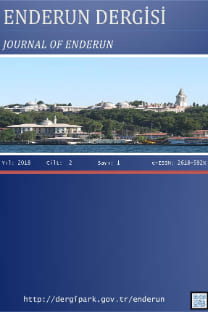TÜRKİYE EKONOMİSİNDE DÖVİZ KURU OYNAKLIĞI İLE DIŞ TİCARET DENGESİ İLİŞKİSİNİN ANALİZİ
Çalışmanın teorik alt yapısı Rose ve Yelen (1989) makalesinde geçen modellemelere dayanmaktadır. Çalışmada kullanılan değişkenler, üç aylık periyodlar halinde USA dolar kuru paritesi, Euro kuru paritesi, ihracat, ithalat ve ihracatın ithalatı karşılama oranı şeklindedir. Çalışmanın veri setinde, 2002-2018 dönemi ele alınarak Hansen (1997) asimetrik eş bütünleşme yöntemi (TAR) yardımıyla ölçülmeye çalışılmıştır. Elde edilen sonuçlara göre, çalışmada, döviz kurlarında yaşanan bir çalkantının, M/X dengesinde beklenenden daha yavaş bir etkiye sahip olduğu görülmektedir. Hızlı bir dengeye dönme hareketi görülmezken, özellikle M/X dengesinin döviz kurundan kaynaklı değişimlerde pozitiften dönüşü dengenin negatiften dönüşüne oranla görece daha yavaştır. Hatta asimetrik modellerin katsayılarını negatiften dengeye ve pozitiften dengeye dönme olarak karşılaştırdığımızda USA Doları’nda 2 katlık, Euro’da ise 3 katlık bir değişimde negatiften dengeye dönme hızı farklılığı tespit edilmiştir.
Anahtar Kelimeler:
Asimetrik Düzeltme, Döviz kuru, Dış Ticaret Dengesi, Türkiye Ekonomisi, ihracat, ithalat
ANALYSIS FOREIGN TRADE OF TURKEY AND EXCHANGE RATE VOLATILITY WITH ASYMMETRIC COINTEGRATION METHODS
The theoretical background of the study is based on the modeling in Rose and Yelen (1989). The variables used in the study are US dollar exchange rate, Euro exchange rate, export, import and import coverage ratio in quarterly periods. In the data set of the study, Hansen (1997) was tried to be measured with the help of asymmetric co-integration method (TAR) by considering the 2002-2018 period. According to the results, it is observed that a turbulence in exchange rates has a slower effect on M/X balance than expected. While there is no rapid return to equilibrium, the positive return of the M/X balance from exchange rate is relatively slower than the negative return of the balance.
Keywords:
Asymmetric Correction, Exchange Rate, Trade Balance, Turkey Economy, Export, Import,
___
- Alptekin, V., (2009), Türkiye’de Dış Ticaret- Reel Döviz Kuru İlişkisi: Vektör Otoregresyon (VAR) Analizi Yardımıyla Sınanması, Niğde Üniversitesi İİBF Dergisi, Cilt:2, Sayı:2, S.132-149.
- Duasa J., (2009), Asymmetric Cointegration between Real Exchange Rate and Trade Variables: The Case of Malaysia, Economic Change and Restructuring. Cilt. 41, Sayı.2: 125-141.
- Engle, R. ve Granger, C. (1987). “Co-integration and Error Correction: Representation, Estimation, and Testing”, Econometrica, vol. 55, issue 2, 251-76.
- Hansen, F.T. (1997), Stabılızıng Selectıon And The Comparatıve Analysıs Of Adaptatıon, International Journal Of Organic Evolution, 51(5), 1997, ss.1341-1351. Karagöz, M., Doğan, Ç., (2005), Döviz Kuru Dış Ticaret İlişkisi: Türkiye Örneği, Fırat Üniversitesi Sosyal Bilimler Dergisi, Cilt:15, Sayı:2, Sayfa:219-228, Elazığ.
- Peron, P. (1989). “The Great Crash, the Oil Price Shock, and the Unit Root Hypothesis”, Econometrica, Vol. 57, No. 6 (Nov., 1989), pp. 1361-1401.
- Perron, P. ve Vogelsang, T.J. (1992). “Testing for a Unit Root in a Time Series with a Changing Mean: Corrections and Extensions”, Journal of Business & Economic Statistics, Vol. 10, No. 4 (Oct., 1992), pp. 467-470.
- Perron, P. ve Vogelsang, T.J. (1998). “Additional Tests for a Unit Root Allowing for a Break in the Trend Function at an Unknown Time”, International Economic Review, 1998, vol. 39, issue 4, 1073-1100.
- Rose, A. ve Yelen, J. (1989), Is there a J-curve?, Journal of Monetary Economics, 1989, Cilt. 24, Sayı.1, 53-68.
- ISSN: 2618-592X
- Yayın Aralığı: Yılda 2 Sayı
- Başlangıç: 2017
- Yayıncı: Cihan USTA
